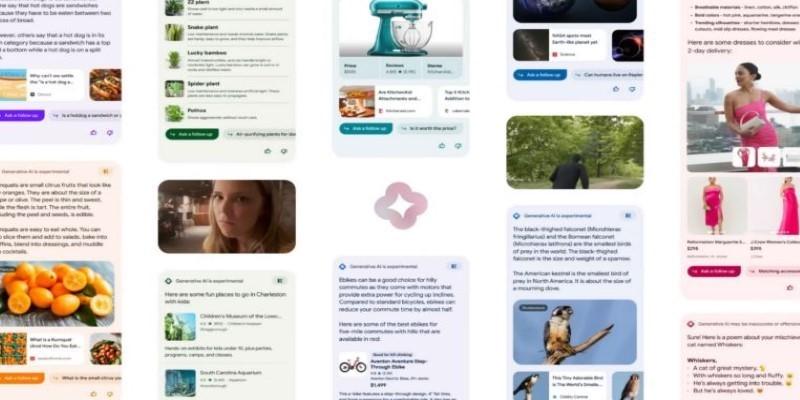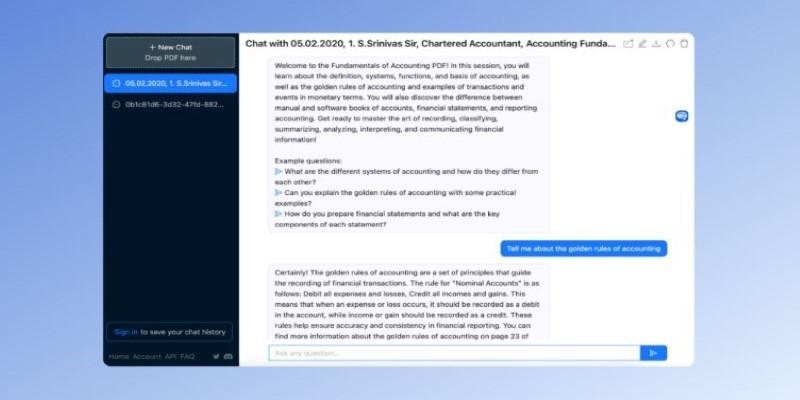Most people don’t enjoy reading massive PDFs. It’s not just the page count—it’s the feeling of sinking into a swamp of dense text, endless sections, and too much background before the point finally appears. Whether it’s a technical manual, a whitepaper, or a policy document, these files are often exhausting to go through.
You’re stuck scrolling, searching for meaning, hoping to find the one paragraph that actually matters. That’s where AI comes in. Instead of spending hours slogging through these documents, you can chat with an AI and get a summary that makes sense in minutes.
Long PDFs aren't built for readability. They're made for completeness, documentation, or compliance. In academic papers, you get twenty pages of background before you reach the findings. In business reports, every department adds its section. Legal files are written with precision, but there is no room for clarity. Even well-organized PDFs can overwhelm you with dense language or references that require more reading.
Then there's formatting. Tables, charts, and footnotes slow the pace, while scanned documents or poorly converted files make things worse. Keyword searches miss context, and scrolling through the whole document is inefficient. Eventually, it stops being about reading and becomes about surviving.
AI offers a way to cut through all of that by delivering information in a way that feels manageable.
AI does more than summarize—it understands structure. It can detect the parts of a document that carry meaning and remove fluff that distracts. When you feed it a long PDF, it’s not just trimming pages; it’s pulling together a version that’s readable, relevant, and structured around your interests.

Unlike Ctrl+F, which looks for exact matches, AI can handle paraphrased concepts. If a section discusses cost risks using technical jargon, AI can still surface it when you ask about financial concerns. It picks up on intent, not just word repetition.
Interacting with AI makes this even more useful. You can upload a 150-page report and ask, “Summarize the main proposal,” then follow up with, “Did they mention any timeline changes?” or “Who’s responsible for execution?” The conversation doesn’t reset—you stay in context, and the AI tracks the content you’ve already referenced.
This turns reading into a dialogue. You're not just getting one summary—you’re getting the parts of the document that are relevant to your questions, shaped around the way you ask.
For people used to decoding complex files alone, that’s a huge change in how they consume information.
People in different fields are using AI this way every day. A researcher might upload five lengthy studies, summarize each one, then compare them for trends. Instead of reading every paragraph, they can focus on where the studies agree or contradict each other.
Students working through required readings can ask for chapter summaries, clarify definitions, or focus on the author's main points without skipping important context. Instead of racing the clock before class, they can absorb more in less time.
Consultants, lawyers, and analysts who deal with long contracts or technical appendices can save time by filtering out standard language and focusing on what’s changed, what’s new, or what requires approval.
In teams, this becomes even more useful. One person might upload a document and use AI to pull out action items, then share those with colleagues without needing everyone to read the full file. The original document remains untouched, but now it’s usable in a fast-paced setting.
Even for everyday use—reading product manuals, terms of service, public reports—AI can strip out irrelevant sections and get you to the parts you care about.
This isn’t about being lazy. It’s about working smarter with tools that understand how bloated most information has become.
AI summarization is good, but it's not magic. It works best on documents with logical structure and decent formatting. Clean PDFs, with clear headings and paragraphs, produce better summaries than poorly scanned or fragmented ones. But even messy documents can be processed with surprising accuracy.

That said, the summaries depend on your questions. A broad request, such as "Summarize this PDF," will provide a general overview. If you want details—such as decisions made, data trends, or criticisms—you'll get better results by asking those directly. The AI remembers the document, so you can keep refining without repeating the upload.
It also works well with partial documents. If you only want section 4 or the appendix, the AI can summarize just that part. You’re not locked into summarizing the whole thing if you don’t need to.
There’s a learning curve in how to ask better questions, but it’s not complicated. The more specific your query, the more tailored the response becomes.
Some users prefer concise summaries. Others want breakdowns by section or side-by-side comparisons. AI can adapt to both. If you need dates, key figures, or obligations extracted from a legal doc, it’ll do that. If you want a plain-English version of a scientific abstract, it can do that too.
It’s not a replacement for critical thinking or full document reviews in high-risk decisions, but it saves time getting to the parts that need attention.
Long PDFs aren't going away, but the way we deal with them is changing. AI tools now provide people with a faster and more useful way to handle documents that would otherwise take hours to read. Instead of getting buried under technical jargon, lengthy introductions, or repetitive content, you can interact with an AI and get exactly what you need. It's like having a personal reader who doesn't miss a section and always responds when you ask questions. For anyone tired of the drag of reading massive files, this makes work and study a lot more manageable—and a lot less painful.

Find out what Retrieval Augmented Generation (RAG) is. Explore its key features, benefits, and real-world applications.

How clique-based compression and advanced techniques revolutionize efficient graph storage and analytics for large, clustered graphs.

How building safe, reliable, and ethical AI systems can unlock their potential while minimizing risks and gaining public trust.

How AI revolutionizes productivity, education, and business by fostering collaboration between technology and human intelligence.

Learn the top 5 ways for efficiently analyzing Power BI performance using DAX Studio for better insights and analysis.

Google wants you to use AI for your next vacation by turning complex travel planning into an easy, conversational process. Discover how its AI travel planner simplifies everything from trip ideas to bookings

How to connect Bard to Gmail, Google Docs, YouTube, and other popular Google services. Learn how Bard extensions help streamline tasks and improve productivity by linking your favorite tools in one place

Tired of scrolling through huge documents? Chat With AI to Summarize Obnoxiously Long PDFs and get quick, relevant insights without reading every page. See how AI summarization simplifies your workflow

Explore the differences between Midjourney and DALL·E 3 to find the best AI image generator in 2025. Compare styles, accuracy, usability, and more

How educational assessment techniques can improve how we evaluate large language models' inference capabilities, moving beyond accuracy metrics to assess true reasoning and understanding.

Discover powerful AI apps transforming productivity, creativity, communication, and everyday problem-solving

Discover eight real-world AI in e-commerce examples for 2025, from smarter shopping to personalization and future growth.